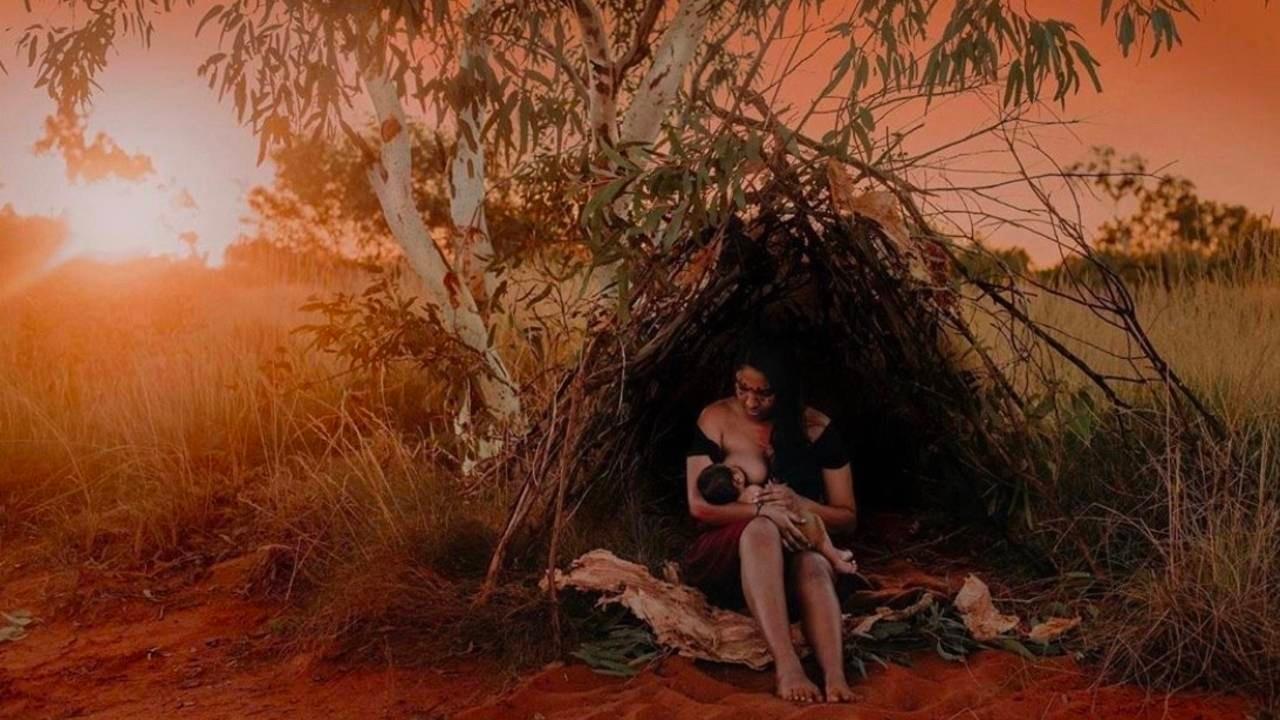Birthing on Country

Thank you to Bobbi Lockyer, Aboriginal artist and photographer, for allowing me to use her beautiful photo.
During my Clinical Science degree at Southern Cross University I studied two units from the College of Indigenous Peoples (Gnibi). As uncomfortable as it is learning about history of invasion of Aboriginal nations and the health crisis facing our Indigenous communities, the education was invaluable in opening my eyes.
Later in 2012, when I screened the Face of Birth documentary at Birth and Beyond, I was shocked to learn about the harsh realities facing Indigenous women when it came time to birth.
It was heart-wrenching to learn that many women are sent away from their country and their families to birth, often alone, in a medical system that doesn’t know how to honour their traditions. The ramifications of this also directly effects their families and communities.
There is a huge disparity in maternal and infant health for Indigenous women compared to non-Indigenous women. The gap is unacceptable. Many of the poor outcomes are preventable with early intervention.
In an effort to learn more about maternity care for Indigenous People, I decided to study the Birthing on Country (BoC) Course with the Australian College of Midwives (ACM).
Janine Mohamed, CEO of The Congress of Aboriginal and Torres Strait Islander Nurses and Midwives (CATSINaM) says “Birthing on Country is not something new, it is a continuation of thousands of years of knowledge and practice.”
Wiradjuri and Wailwaan woman, Fleur Magick-Dennis says “Birthing on Country is about Aboriginal women being able to access our culture during pregnancy and birth if we would like to do so”
The Birthing on Country project is seen as sort of a ‘renaissance’ of traditional care. For many Indigenous women, pregnancy and birth has a strong connection to country and culture. Birthing on Country is considered ‘to be the best start in life for Aboriginal and Torres Strait Islander babies and their families’.
Yolgnu Elder and Manager of the Yirrkala Women’s Centre, Djapirri Mununggurritji says ‘Birthing in the country is the most sacred and the most powerful thing that can happen to a woman’.
The Australian College of Midwives defines Birthing on Country as maternity services designed and delivered for Indigenous women that encompass some or all of the following elements:
- Are community based and governed
- Allow for incorporation of traditional practice
- Involve a connection with land and country
- Incorporate a holistic definition of health
- Value Indigenous and non-Indigenous ways of knowing and learning
- Include risk assessment and service delivery
- Are culturally competent and
- Are developed by, or with, Indigenous people
Director of Murdoch University’s Ngangk Yira Research Centre, Professor Rhonda Marriott says “We need to understand what women want and ensure that they get the right maternity care, especially culturally rich birthing experiences in hospitals, and safer assisted births in the bush.”
One of the key aspects in providing culturally sensitive care is to ask the mother-to-be what her needs are and work out ways to include this.
Writing a birth plan is a great way for women to define and communicate what they are hoping for with their birth. Aboriginal women can include their cultural ways into their plan so care providers can further understand and support their needs. Connection to country is an intrinsic part of overall health and wellbeing. Community support and a sense of belonging is essential.
If you’re a midwife or birth worker, please ensure you undertake further studies so you know how to deliver culturally supportive maternity care for Aboriginal and Torres Strait Islander peoples. If you know an Aboriginal person thinking about studying midwifery, definitely encourage them to do so. We need more Aboriginal and Torres Strait Islander midwives in the field!
Let’s work harder to help Aboriginal babies have the best start to life.
Do you want to feel more confident about birth?
Download the free natural birth checklist!
It has practical tips and natural suggestions for the three stages of labor, a packing list for birth, pictures of useful labour positions and helpful hints for partners.


